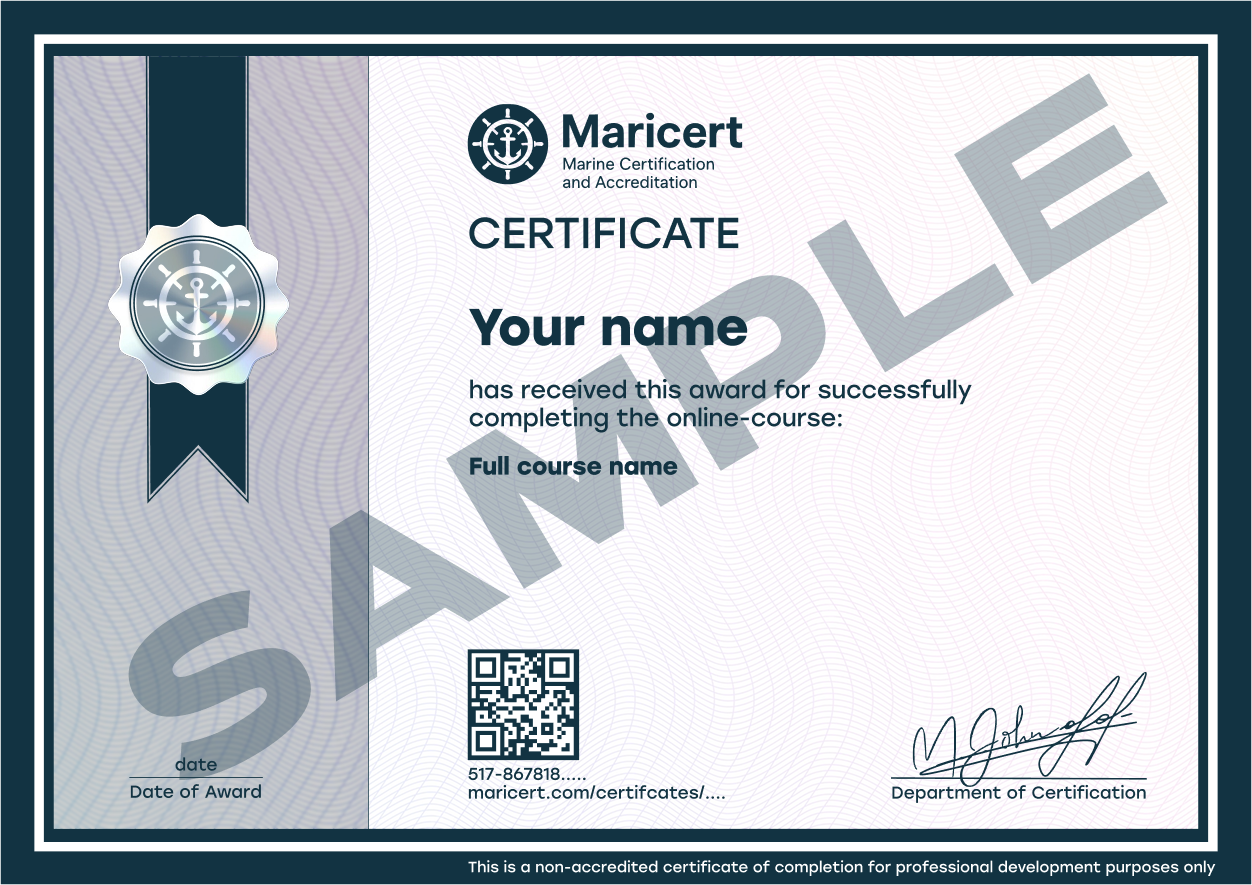Seafood quality assessment and freshness evaluation
LESSONS
- Glossary
- Evaluating seafood quality
- Overview of fish composition
- Structure and function of fish muscle
- Defining freshness in fish
- Freshness indicators in fish
- Sensory evaluation and EU grading
- Sensory scoring of fresh fish
- Chemical freshness markers in fish
- Histamine and amines in seafood safety
- K-value, pH, and tech in fish assessment
- Using VIS/NIR to monitor seafood freshness
- AI-driven odor sensors for fish spoilage detection
- Colorimetry in seafood evaluation
- Seafood texture: tools and impact
- Using NMR to evaluate seafood quality
- Fish quality monitoring with imaging systems
- References
- Test

Duration
7–9 hours for studying the theoretical material, 2 hours for completing the final test.
Certificate
Upon successful completion of the online course, you will receive a certificate titled:
"Advanced Seafood Processing & Safety: Extending Shelf Life".
Certificate of attendance training completion.

MARICERT is a private training and consulting initiative. We do not operate as an official UK awarding body or government accreditation agency. All certificates provided by MARICERT are non-official and are issued for training completion purposes only. Our services are designed to support professional development and are not equivalent to formal qualifications.
Database registration
Each certificate has a unique serial number, is registered in our database, and includes a QR code for authenticity verification. Add your certificates when sending your CV, and your future employer will be able to verify them.
Course description
Evaluating seafood quality is a critical process that ensures the safety, freshness, and market value of fish and seafood products. This course explores the biological, chemical, sensory, and instrumental methods used to assess quality throughout the supply chain—from harvest to consumer. You’ll learn how species variability, muscle composition, spoilage indicators, and environmental contaminants influence freshness and safety. Special attention is given to sensory analysis, EU grading, and tools like QIM, K-value, TVB-N, and VIS/NIR spectroscopy. Modern technologies such as electronic noses, NMR, and image analysis systems are also covered. The course highlights both traditional and emerging approaches used to monitor texture, color, odor, and chemical changes in fish. Practical applications and real-world challenges are examined, with emphasis on scientific, regulatory, and industry perspectives. By the end of this course, you'll understand the factors that define seafood quality and how to measure and interpret them using integrated methods. This knowledge is essential for professionals in seafood processing, inspection, product development, and quality control.
What you’ll learn
- How to define and assess seafood freshness and spoilage
- The role of sensory analysis, EU grading, and QIM systems
- Chemical indicators such as TVB-N, TMA, DMA, and K-value
- Common biological hazards in seafood and their health impact
- Application of modern tools like VIS/NIR, NMR, and e-noses
- Evaluation of seafood muscle structure, fat content, and vitamins
- Key visual, physical, and microbiological quality traits
- Regulatory standards and best practices in quality control
Who this course is for
- Seafood industry professionals involved in harvesting, processing, or distribution
- Quality managers responsible for maintaining product standards and shelf life
- Inspectors and regulatory staff working in food safety and compliance
- Product developers creating new seafood-based products or formulations
- Food technologists specializing in post-harvest handling and preservation
- Researchers focused on seafood quality, freshness, and spoilage assessment
- Students and graduates in food science, marine biology, or aquaculture looking to deepen their expertise in seafood quality and safety
- Anyone working in production, inspection, or research who wants practical skills for evaluating and ensuring seafood quality
